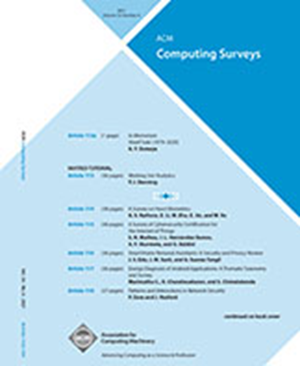图上的知识提炼:综述
IF 28
1区 计算机科学
Q1 COMPUTER SCIENCE, THEORY & METHODS
引用次数: 0
摘要
图神经网络(gnn)因其处理图数据的能力而受到广泛关注。然而,由于模型大小和多跳数据依赖所带来的可伸缩性限制,它们难以在资源有限的设备中部署。此外,现实世界的图形通常具有复杂的结构信息和特征。因此,为了提高gnn的适用性,充分编码复杂的拓扑信息,引入知识精馏法(Knowledge Distillation on Graphs, KDG)来构建更小但更有效的模型,从而提高模型压缩和性能。近年来,KDG取得了相当大的进展,提出了许多研究。在这次调查中,我们系统地回顾了这些作品。具体来说,我们首先介绍了KDG面临的挑战和基础,然后通过回答以下三个问题对KDG的现有工作进行了分类和总结:1)提炼什么,2)谁对谁,3)如何提炼。我们提供了深入的比较,并阐明了每个设计的优点和缺点。最后,我们对未来的研究方向进行了展望。本文章由计算机程序翻译,如有差异,请以英文原文为准。
Knowledge Distillation on Graphs: A Survey
Graph Neural Networks (GNNs) have received significant attention for demonstrating their capability to handle graph data. However, they are difficult to be deployed in resource-limited devices because of model sizes and scalability constraints imposed by the multi-hop data dependency. In addition, real-world graphs usually possess complex structural information and features. Therefore, to improve the applicability of GNNs and fully encode the complicated topological information, Knowledge Distillation on Graphs (KDG) has been introduced to build a smaller but effective model, leading to model compression and performance improvement. Recently, KDG has achieved considerable progress, with many studies proposed. In this survey, we systematically review these works. Specifically, we first introduce the challenges and bases of KDG, then categorize and summarize the existing work of KDG by answering the following three questions: 1) what to distillate, 2) who to whom, and 3) how to distillate. We offer in-depth comparisons and elucidate the strengths and weaknesses of each design. Finally, we share our thoughts on future research directions.
求助全文
通过发布文献求助,成功后即可免费获取论文全文。
去求助
来源期刊

ACM Computing Surveys
工程技术-计算机:理论方法
CiteScore
33.20
自引率
0.60%
发文量
372
审稿时长
12 months
期刊介绍:
ACM Computing Surveys is an academic journal that focuses on publishing surveys and tutorials on various areas of computing research and practice. The journal aims to provide comprehensive and easily understandable articles that guide readers through the literature and help them understand topics outside their specialties. In terms of impact, CSUR has a high reputation with a 2022 Impact Factor of 16.6. It is ranked 3rd out of 111 journals in the field of Computer Science Theory & Methods.
ACM Computing Surveys is indexed and abstracted in various services, including AI2 Semantic Scholar, Baidu, Clarivate/ISI: JCR, CNKI, DeepDyve, DTU, EBSCO: EDS/HOST, and IET Inspec, among others.
 求助内容:
求助内容: 应助结果提醒方式:
应助结果提醒方式:


